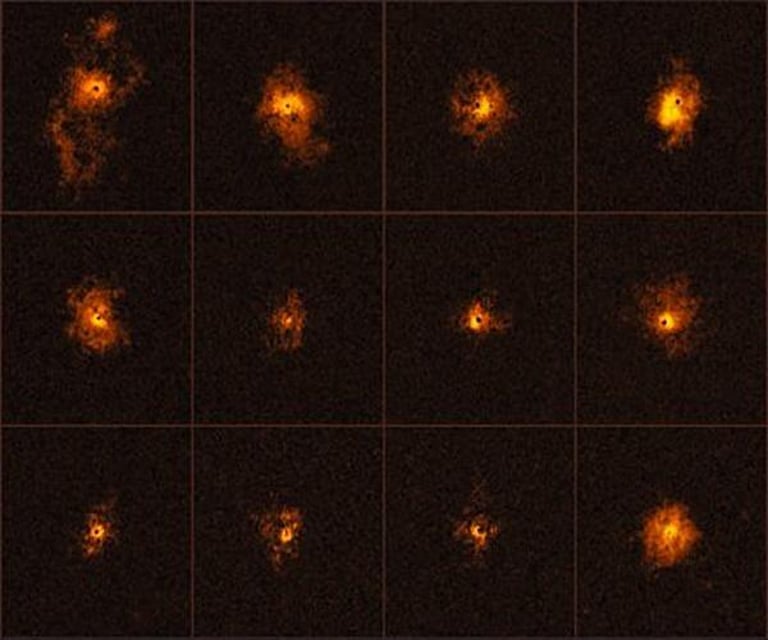JWST Uncovers Ancient Quasars, Challenging Theories on Black Hole and Galaxy Formation
October 21, 2024
This research revealed isolated quasars from the early universe, challenging previous theories about their formation and suggesting they may exist in sparsely populated regions.
The research team created a mosaic of images to analyze the environments around these quasars, discovering significant differences in the number of neighboring galaxies.
They hypothesize that some early quasars may be obscured by cosmic dust, prompting further observations to identify hidden galaxies.
These findings challenge current theories of galaxy and black hole formation, particularly regarding the role of dark matter in guiding the growth of matter in the early universe.
The study, published in the journal Nature Astronomy, confirms theoretical predictions about the existence of inside-out galaxies in the early universe.
Co-lead author Sandro Tacchella emphasized the importance of understanding galaxy evolution over cosmic time, facilitated by JWST's ability to provide observational data from billions of years ago.
With approximately 20 years of operations remaining, JWST is expected to continue making groundbreaking discoveries and answering fundamental questions about the universe.
Experts believe it may still be possible to reconcile these new findings with current cosmological theories, despite the challenges they present.
The JWST captures light from 13 billion years ago, allowing scientists to study the conditions of the early universe and refine existing models.
The James Webb Space Telescope (JWST), a collaboration among NASA, ESA, and the Canadian Space Agency, is designed to explore the early universe and distant celestial bodies.
Recently, astronomers using JWST discovered supermassive black hole-powered quasars dating back 13 billion years, raising intriguing questions about their formation.
Specifically, five quasars formed between 600 to 700 million years after the Big Bang, with black holes a billion times more massive than the sun, located in areas described as being in 'the middle of nowhere'.
Summary based on 7 sources
Get a daily email with more Science stories
Sources

Mashable • Oct 22, 2024
Webb telescope spots extremely bright objects. They shouldn't be there.
Live Science • Oct 21, 2024
James Webb telescope discovers 'inside out galaxy' near the dawn of time
The Hindu • Oct 22, 2024
Black holes in Webb data allay threat to cosmology’s standard model
Big Think • Oct 22, 2024
How has the James Webb Space Telescope changed cosmology?